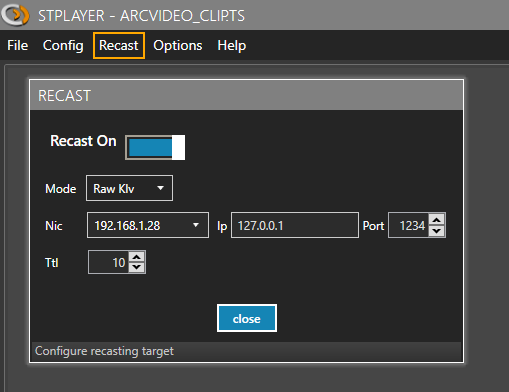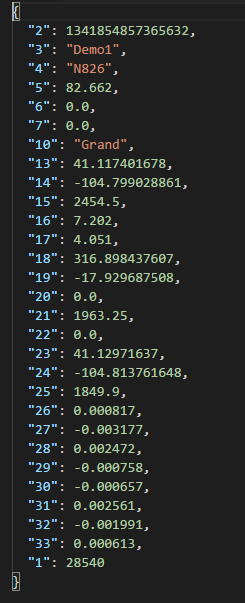Metadata Recasting
The Recast function is used to re-broadcast extracted stream metadata (RAW or decoded) over UDP for processing by other applications (Metadata sharing).
In SYNC KLV mode (when the PTS timestamps are available) the selected metadata PID is demultiplexed from the stream / file and stored into the internal FIFO (in order to be synced with the video). When the presentation time comes, the packet is sent over UDP.
In ASYNC KLV mode the data is processed as it arrives.
Recaster configuration
Recaster configuration defines the url for UDP streaming, so the desirable parameters, like network interface (if there is more than one), IP and port should be set by the user. Both Multicast and Unicast modes are supported.

Once you set the values, they are saved as part of the application configuration and will be applied to all missions that are played back.
RAW Klv Recasting
In RAW Klv mode, the incoming data packets are demultiplexed and assembled from the 188 bytes TS packets and sent over UDP without further processing, as is.
So, the buffer will start with 06 0E 2B 34 02 0B 01 01 0E 01 03 01 01 00 00 00, something like this:

Decoded (Json) Metadata Recasting
In Json mode, in addition to demultiplexing and assembling, the incoming Klv packets are decoded and their klv items are sent to MISB 0601 / 0102 / 0903 decoders. After that, the information is sent as Json encoded packet, where the keys represent the MISB tags and values are fully decoded MISB data. If nested sub-standards (like MISB 0102 and 0903) are present, they will be inserted as nested Json objects.
